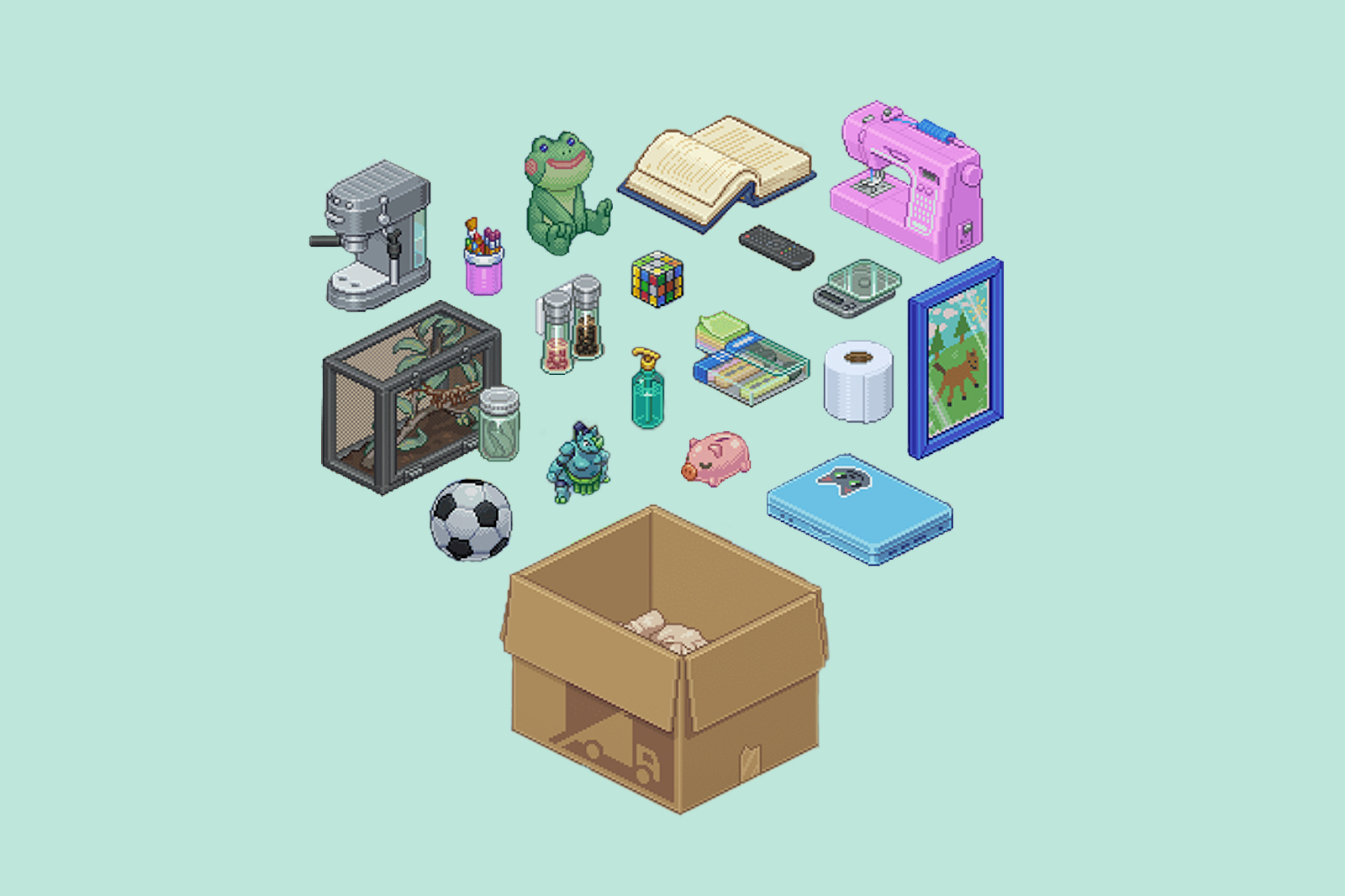In class today, we considered the idea of the “ordinary.” To some extent, all three games of this week put us in contact with ordinary concepts like houses (and the objects that inhabit them), and relationships (and the ways they enrich or complicate our lives). I want to focus on how Unpacking considers these two concepts of houses and relationships, in various forms of narratives and to varying effects. In any case, the puzzle that is Unpacking leaves the player to consider the ordinary’s impact through extraordinary moments.

The 21 years that you help unpack within 8 levels carry through some notable items–in this case seeming souvenirs of the past. At the level of invoking a specific narrative, the environment of the game provides quite explicit clues as to the era in which you are moving into a new space. Perhaps the first level is ambiguous in its setting (at least within the past thirty years), until the Gameboy comes out and you also notice the absence of Apple products. Also, take note of the particular brands of characters like Trolls and My Little Pony. From here, the game’s evocative spaces transform through its illustrations of different TVs, cooking sets, and additional tech that change significantly between eras, as well as the character’s economic status. Gone Home and Curtain in their own right invoke specific eras through their environment’s objects, but Unpacking in particular leans into specific objects to center a temporal element for both world-building and invoking nostalgia.

Some items also just serve as means to trigger embodied narratives for the player, as it is not surprising that some players would love the simulation aspect of the gameplay while others would find it tedious. Indeed, unpacking items as a concept serves as a mechanism for the game to create parallel experiences–frustration and pleasure at the central task. With either approach to the mechanics, what holds true is that the player is able to build significant emotional ties to the central mechanics of the game, wherein they are either drawn to slow down and meticulously think their way through the puzzle or they can speed through in frustration. Both of which are akin to the real-life nature of the activity.
Of course, the most important of objects are those that carry between levels and years. I would argue that the value of these souvenirs comes not just from the enacted story that comes along with them but from the emergent connection of the player to these objects. To this end, it is important to note that items like the stuffed pig, plushie chickens, purple mug, and a few other objects follow the player between years and even till the end of the game in 2018. Players that notice their presence don’t have to be necessarily great spotters, as their inclusion across levels is part of the enacted narrative that the game is trying to get across (ie the life story of the main character). What I would say is neat about these ordinary objects is that they not only provide context to the objects the character finds sentimental, but they operate as a mechanism to bind the player and the gameplay through their interaction. It is not only that the character and the items have a relationship, but through repetition, the game can also establish familiarity between what is on screen and who is doing the unpacking.

For a game that is so specifically about the life of a particular character, these items demonstrate that there is still a significant level of value in the interaction between the player and the items that even the game designers may not account for. Thus, the objects of Unpacking serve not only as the main points of movement in the game but also allow players to begin to care about the ordinary items they are moving between big life changes.

